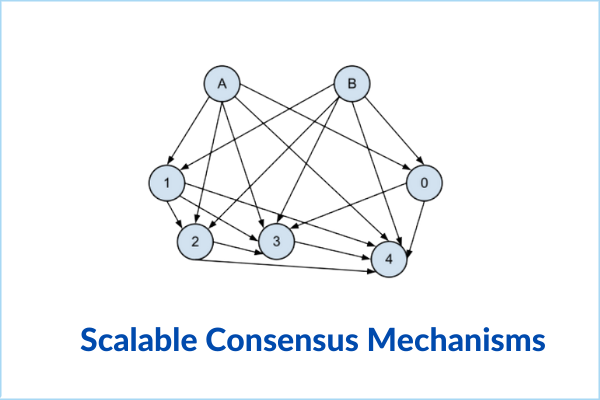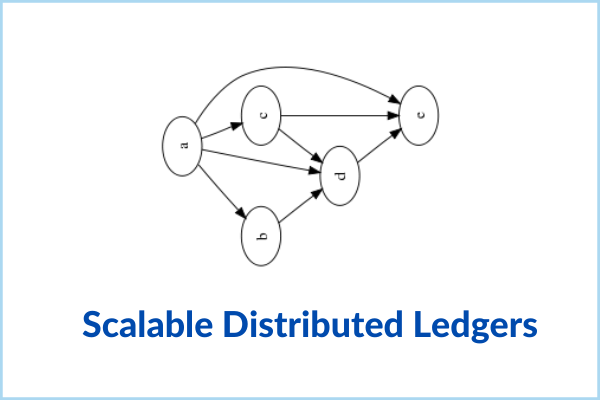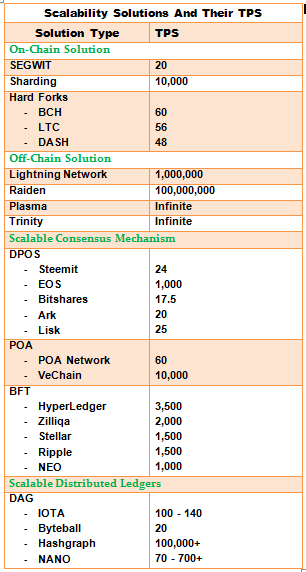In this post, I described 4 solutions to scalability issues in cryptocurrency.
Cryptocurrency was created to make transactions in financial systems a lot easier and faster.
While it has been doing a great job so far, it does have its limitations.
Top on the list is scalability, one nut that cryptocurrency is yet to crack.
Keep reading to learn how scalability is a problem and possible solutions.
Post Summary
- Understanding Scalability Issues In Cryptocurrency
- Top 4 solutions to Scalability Issues In Cryptocurrency
- FAQs
- Conclusion
Enjoy your read!
Understanding Scalability Issues In Cryptocurrency

Every cryptocurrency is hosted on a blockchain.
A blockchain is rated based on the average time it takes for a transaction to be validated and stored in each peer node.
Also, the number of simultaneous transactions that can be processed within a given interval matter.
Scalability is a measure of both factors.
It is the ability of a blockchain network to process many transactions in the shortest time possible.
The issue of scalability began after the launch of the first cryptocurrency, Bitcoin.
Block creation took about 10 minutes and validating a transaction consumed 6 minutes.
This bothered crypto enthusiasts and blockchain developers hence the hunt for scalability solutions.
Scalability, to an extent, became a measure of how well a cryptocurrency’s network is doing better than the Bitcoin blockchain.
Any improvement in terms of consensus mechanism, network latency, node infrastructure, etc. is seen as “scaling.”
Let’s briefly look at these factors that influence scalability…
i. Consensus mechanism
This determines how a transaction is validated and finalized in a blockchain network.
It helps to balance the degree of decentralization, scalability and security that a blockchain network possesses.
ii. Network Latency
Latency refers to how long it takes to broadcast a transaction to all the nodes in a network and collating their responses to achieve consensus.
The lesser the time, the higher the scalability of the network.
iii. Node Infrastructure
This covers the resources that make up a node like CPU, memory, hard disk, etc.
A well-equipped node will respond faster thereby contributing to the scalability of the blockchain.
iv. Number of nodes
The more nodes there are in a network, the longer it will take to reach consensus and eventually, low scalability.
v. Transaction Payload size
This refers to the weight of transactions that a block can carry.
Big payload may delay replication across nodes.
And this delay reduces scalability.
vi. Transaction queuing
Queuing measures the transaction handling capacity of each individual node.
A scalable network is one with nodes that process transactions fast.
After considering these factors, different solutions have been adopted to solve scalability issues in cryptocurrency.
I discussed them in the next section.
Tag along!
Top 4 Solutions To Scalability Issues In Cryptocurrency
- First Layer/On-Chain Solutions
- Second Layer/Off-Chain Solutions
- Scalable Consensus Mechanisms
- Scalable Distributed Ledgers
Find full details on each one below_
1. First-Layer/On-Chain Solutions

This type of solution involves making changes to a cryptocurrency’s codebase to improve its scalability.
A good example is increasing the block size or reducing the block time.
Usually, it takes a hard fork to effect an on-chain solution which results in a new blockchain.
Various applications of on-chain solutions include:
a. Segregated Witness (SEGWIT)
This is a protocol upgrade for Bitcoin.
It removes the signature data for each transaction.
This frees up space as the signature data occupies almost 70% of the entire space of a transaction.
The signature data is the digital signature that confirms the ownership of the sender’s funds.
Removing it provides space to add more transactions in Bitcoin’s 1MB-capacity blocks.
Litecoin uses SEGWIT to boost scalability.
b. Sharding
Sharding is another solution to scalability issues in cryptocurrency.
It involves dividing the blockchain into shards.
Shards are small, manageable parts that run parallel to one another.
Each shard processes transactions within the group, thus increasing processing output across the board.
The goal is to enable a network to function as a sum of its parts instead of depending on the speed of each individual node.
Polkadot and Ethereum 2.0 use Sharding.
C. Hard Fork
As mentioned, on-chain solutions may result in a hard fork.
A hard fork occurs when a split in a cryptocurrency’s network decides to create a new coin that will do better than the previous.
They achieve this by implementing changes to the underlying code of the initial coin.
Popular examples are:
i. Bitcoin Cash (BCH)
BCH is a hard fork of Bitcoin that increased block size to 8MB
ii. Litecoin (LTC)
LTC is another fork of Bitcoin.
The major change here was the reduction of block time from 10 minutes to 2.5 minutes.
iii. Dash (DASH)
Dash is also a fork of Bitcoin.
It operates a double-tiered system (normal miners that validate blocks and masternodes that cater for privacy features and instant transactions).
Others are BSV, ZEC, RVN, and BTG.
(You will gain more insight on hard fork from this post – BitcoinCash Hardfork – A Non-Techy Guide Against Replay Attacks)
2. Second-Layer/Off-Chain Solutions

Second-layer solutions are secondary protocols built on top of the main blockchain.
They receive transactions from the main chain.
This saves the main chain some space and reduces network congestion.
Additionally, it improves speed and efficiency in completing transactions.
It has proven to be one of the efficient solutions to scalability issues in cryptocurrency.
Popular use cases are:
a. Lightning Network
This is an off-chain scaling solution for Bitcoin.
It enables off-chain channels to process instant transactions with minimal fees.
Learn more about it here.
b. Raiden Network
Raiden is a second-layer scaling solution for the Ethereum blockchain.
Ethereum users can create State Channels on Raiden without broadcasting on the main blockchain.
c. Plasma
This is also an off-chain scaling solution for Ethereum.
Plasma enables the creation of ‘child chains’ from the parent blockchain.
Each child chain operates as a separate blockchain but relies on the security of the main chain.
d. Trinity
Trinity Network Credit is a second-layer solution built on the NEO blockchain.
It uses state channels to increase blockchain throughput.
Additionally, Trinity focuses on real-time payments, privacy protection, and low fees for NEO assets.
3. Scalable Consensus Mechanism

Here is another common solution to scalability issues in cryptocurrency.
The idea here is to modify the consensus making process to foster scalability and transaction throughput.
Scalable Consensus Mechanisms include:
a. Delegated Proof-Of-Stake (DPOS)
You can think of DPOS as the democratic process of running a country.
Here, token holders vote in delegates that validate transactions on the network on their behalf.
DPOS blockchains run faster than most traditional public blockchains.
This is because block creation depends on few trusted nodes rather than several nodes.
Some projects that use DPOS are TRON, EOS, Tezos, etc.
b. Proof-Of-Authority (POA)
POA is a reputation-based consensus algorithm where selected nodes or accounts validate transactions in the network.
These nodes dictate the state of transactions in the blockchain.
Participants in a POA system stake their identities rather than tokens (as seen in PoS).
POA is more suitable for a permissioned and private blockchain system because of its identity-based model.
Platforms that use POA include POA Network on the Ethereum blockchain and VeChain.
You can learn more about POA here.
c. Byzantine Fault Tolerance (BFT)
This is not exactly a consensus mechanism but a technology that aids in achieving consensus.
It removes the Byzantine Generals Problem which is a major challenge in blockchain technology.
Byzantine Generals’ Problem states that “interconnected computers within a decentralized and distributed system can never be entirely sure that each computer is displaying the same set of data.”
BFT helps blockchains achieve consensus irrespective of the Byzantine Generals’ Problem.
Furthermore, it has different types. And they are:
i. Practical Byzantine Fault Tolerance (PBFT)
PBFT allows a process to operate independently of other processes.
In other words, one primary node communicates with backup nodes to reach a consensus through a majority.
Two projects that use PBFT are Hyperledger and Zilliqa.
ii. Federated Byzantine Agreement (FBA)
This type of BFT achieves consensus with quorums and quorum slices.
Quorum is the number of nodes needed to reach a consensus within a system.
It consists of a group of quorum slices that represents the choices of the individual nodes within them.
Once a quorum is attained, the FBA updates its public ledger of transactions accordingly.
Projects that adopt FBA are Stellar, Ripple, and Pi.
iii. Delegated Byzantine Fault Tolerance (DBFT)
For DBFT, two nodes come to play namely bookkeeping nodes or delegates and ordinary nodes.
Ordinary nodes and token holders vote for delegates that will be randomly selected to validate transactions.
DBFT was popularized by NEO.
(You may also like Consensus Mechanisms: The Holy Grail Of Blockchains| An Un-Ignorable Read)
4. Scalable Distributed Ledgers

Lastly, on my list of solutions to scalability issues in cryptocurrency is Scalable Distributed Ledgers.
These ledgers do not organize information into chained, sequential blocks like the traditional blockchain.
Instead, information/transactions run asynchronously, i.e. they operate independently.
This is made possible with the Directed Acyclic Graphs (DAG) technology.
DAG is a distributed ledger technology that enables transactions to run independently.
It utilizes a linear data structure where data flows only from earlier to later.
That way, many transactions are processed faster.
Top platforms that use DAG are:
a. IOTA
IOTA is a project that is focused on the Internet-of-Things (IOT) and micro-transactions.
It uses the Tangle data structure where individual transactions are linked to each other.
The heaviest branch of interlinked transactions is the most valid.
All users in this network are miners.
They must validate two previous transactions before they can send out a new one.
Read our review of IOTA to learn more.
b. Byteball
This network also uses the Tangle data structure.
Here, earlier transactions are given more weights as well as transactions validated by trusted nodes or ‘Witnesses’.
The Byteball network has a total of 12 witnesses.
Other similar projects are Hashgraph and NANO.
So, what improvements have been recorded following these solutions?
Find out from the table below:

See? These solutions offer a higher scalability compared to what we have in Bitcoin.
Let’s answer some frequently asked questions and then we can call this post a wrap
FAQs
It has a lot to do with the ‘Blockchain Trilemma’, a term that refers to decentralization, security, and scalability.
Over time, blockchains have failed to achieve all 3 principles at once.
Two have to stand out while the other suffers.
For example, in trying to achieve decentralization, you need the whole community to participate.
This will delay consensus and in turn reduce scalability.
Meanwhile, decentralization helps secure the network because it will be difficult to manipulate.
Certainly.
If there is anything that this space is known for, it is consistent innovation.
It may take a while but I believe the future is bright for blockchain and crypto scalability.
PS:
If you want to learn how to trade cryptocurrencies profitably, then enroll in our Crypto Trading Mastery Course by going to www.ctmastery.com.
You can also join our Telegram community at https://t.me/ctmastery
Conclusion
Scalability issues in cryptocurrency are the major reason why this system has not completely outrun the traditional banking sector.
Earlier, we discussed some solutions that have been proffered to the problem.
We are not there yet but we anticipate blockchain innovations that will bring lasting solutions to crypto scalability.
And that’s all I have for you in this post. I hope you enjoyed the read.
Over to you;
What’s your take on blockchain scalability? Do you think it is worth fighting for?
Which of the 4 solutions above do you think is more efficient?
Let me hear your thoughts in the comments section.
Also, hit those SM icons to share this post with your friends, thank you!
Top picks for you…
- These 13 Altcoins Are Steaming Hot – You Can Buy Them Now!
- Make Money While You Sleep – 6 Ways To Earn Passive Crypto Income
- 10 Best Exchanges to Buy Bitcoin in Nigeria (2021)



Definitely! Blockchain scalability problem has to be tackled if Cryptocurrencies will be the financial giant as planned.
And I think improvements on consensus mechanisms are the most efficient solution so far